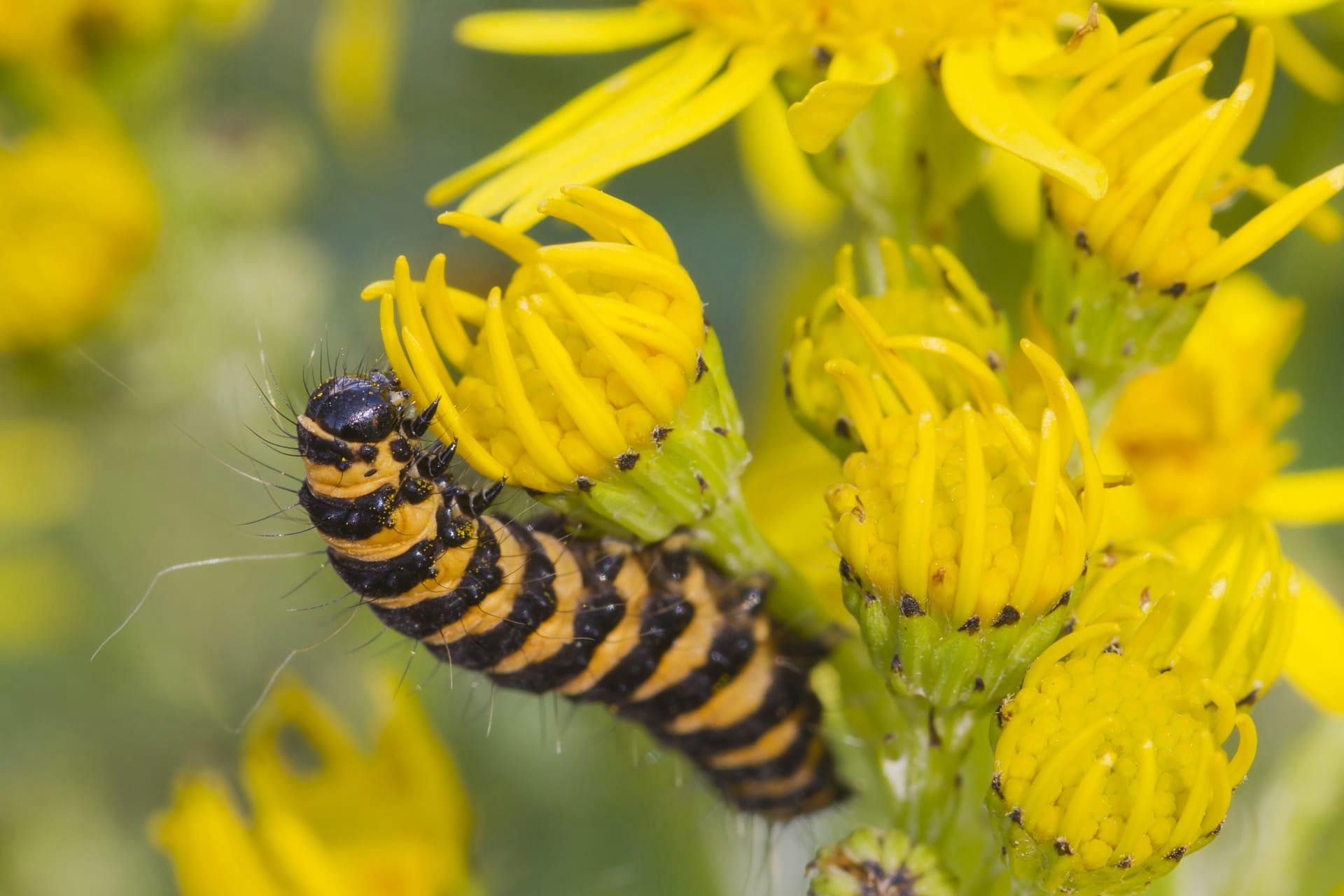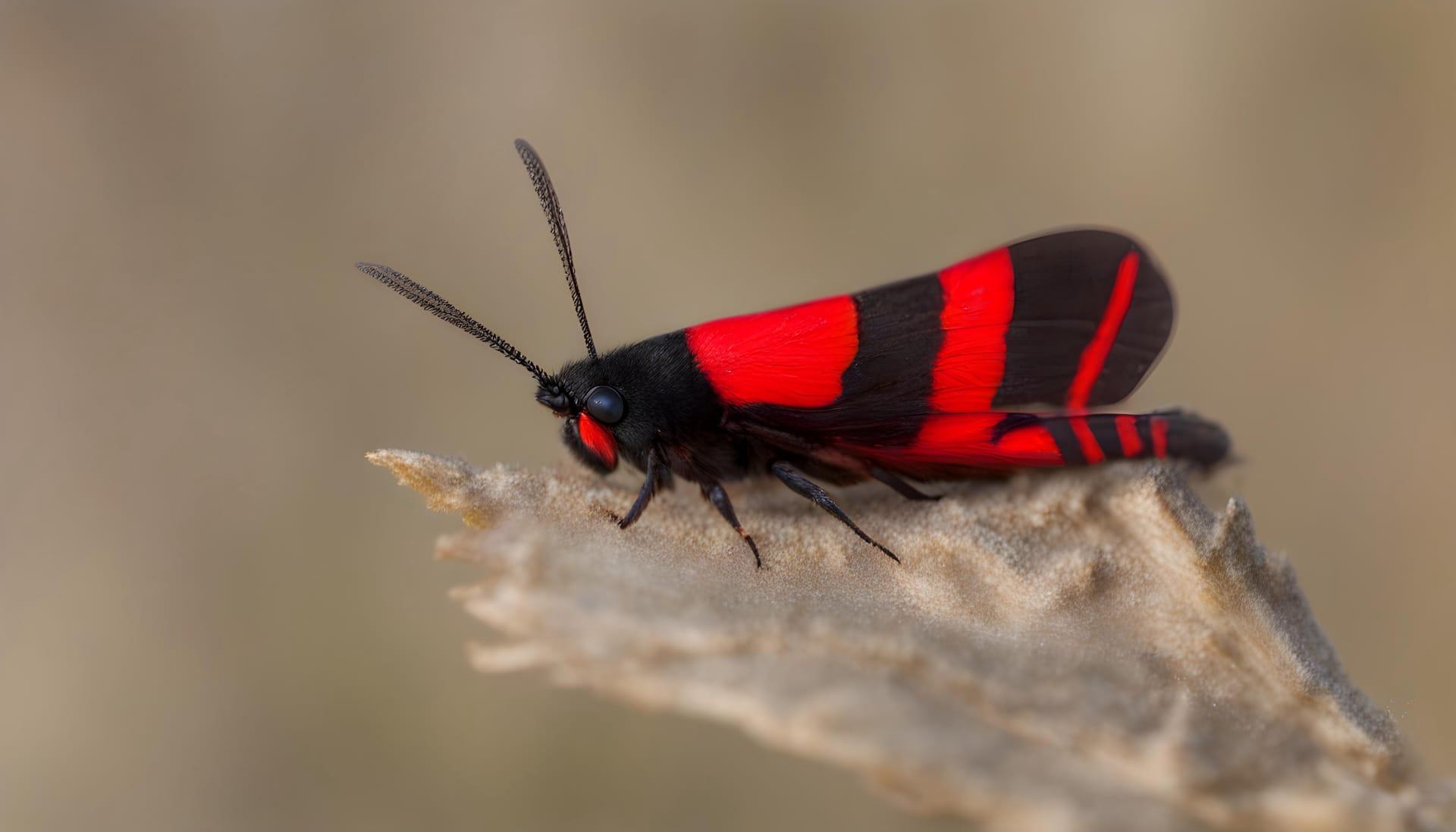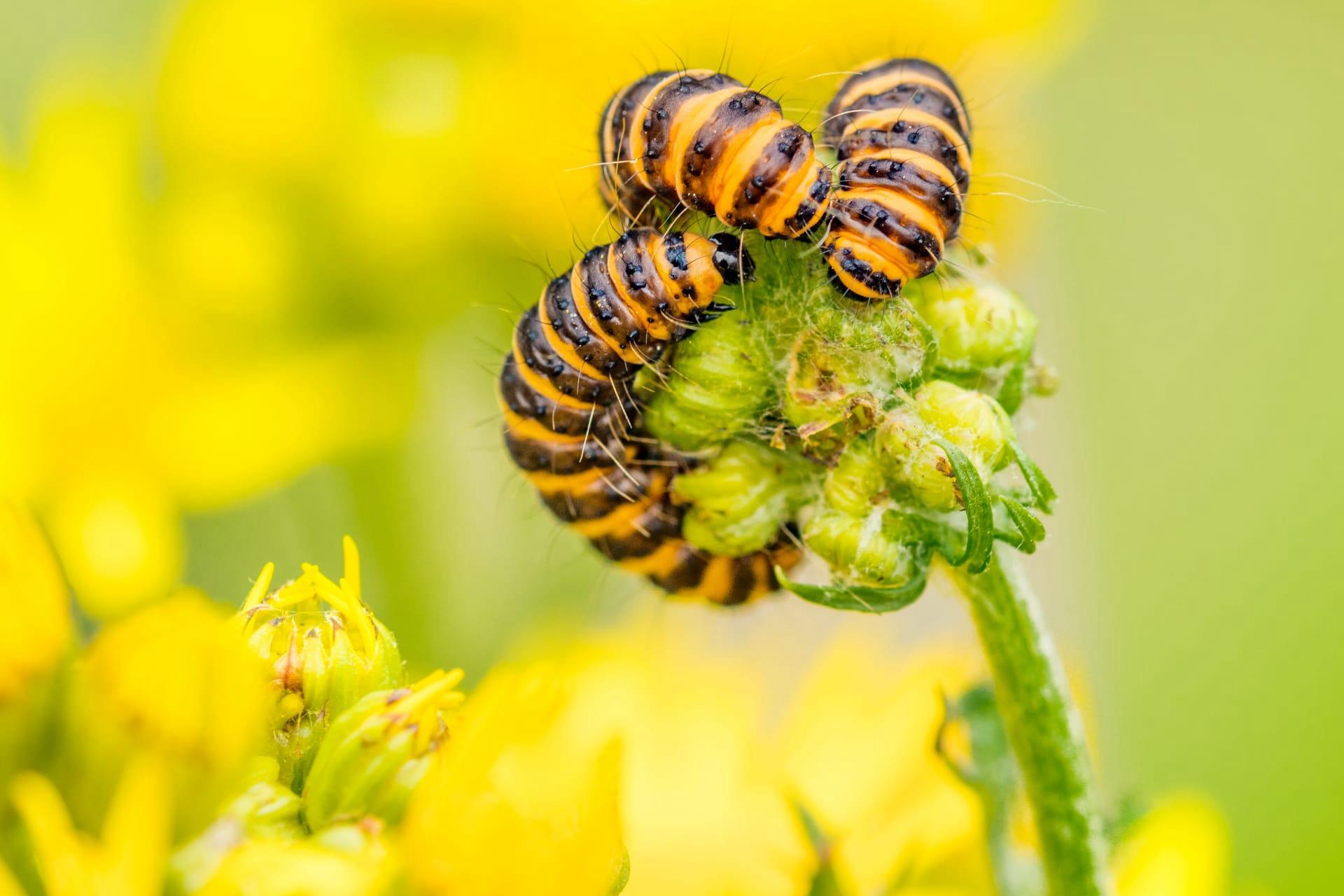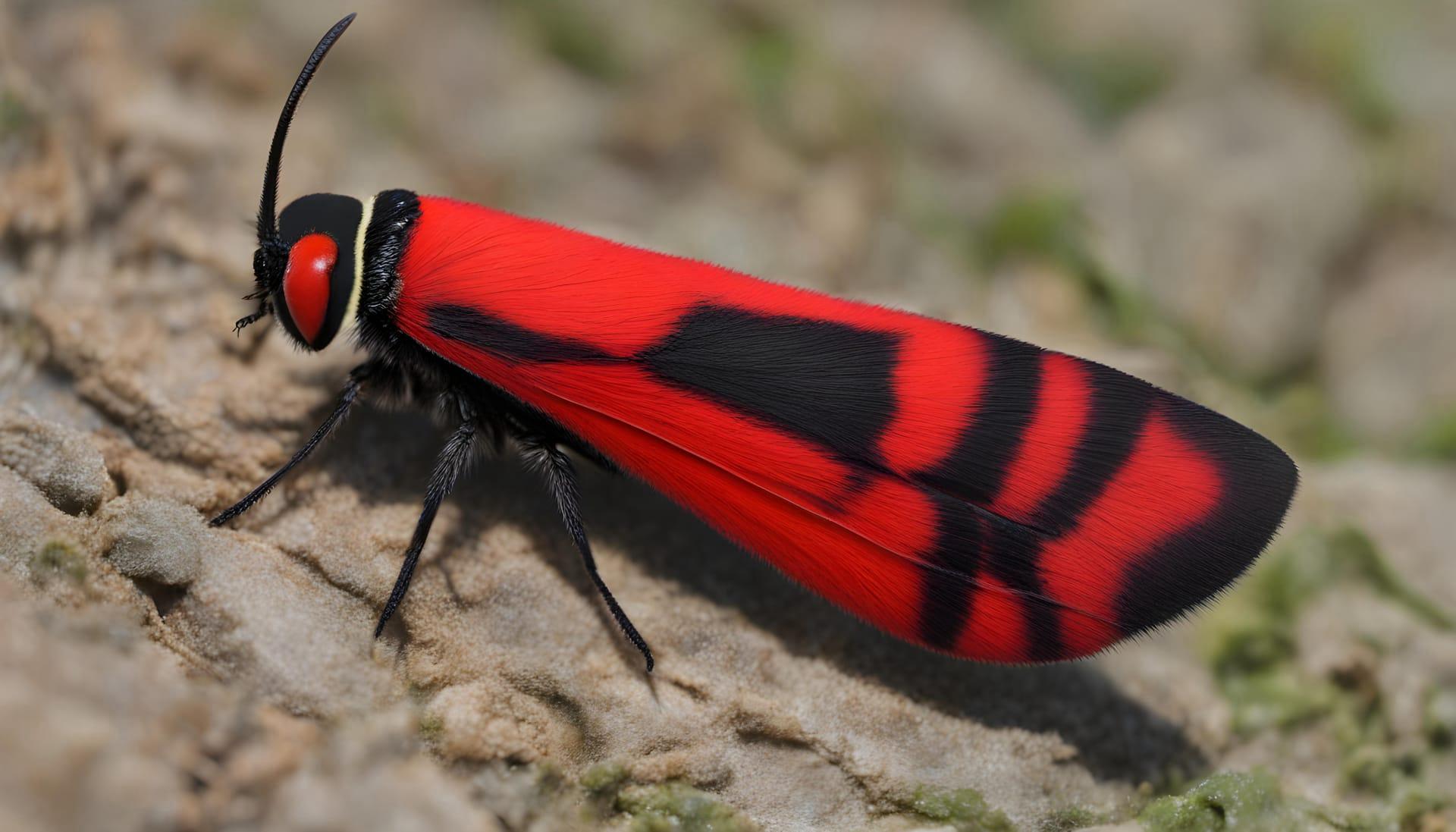Cinnabar Moth
- Home /
- Mini Encyclopedia /
- Animal /
- Cinnabar Moth
1
The Cinnabar Moth, scientifically named Tyria jacobaeae, belongs to the Erebidae family, within the order Lepidoptera. This species is distinguished by its striking coloration – the adults showcase a vivid red and black pattern, while the caterpillars are equally vibrant with their yellow and black stripes.
Native to Europe and Asia, the Cinnabar Moth has also been introduced to North America and New Zealand for biological control purposes. Its habitat spans across diverse environments, including meadows, waste grounds, and especially areas where its primary food source, the ragwort plant, is abundant.

2
Question: Do the bright colors of the Cinnabar Moth caterpillar indicate its poisonous nature?
Answer: Yes, the caterpillar's bright yellow and black stripes serve as a warning coloration, indicating its toxicity. The caterpillars feed on ragwort leaves, which contain alkaloid toxins. These toxins accumulate in their bodies, making them unpalatable to predators. This defense mechanism is a classic example of aposematism, where organisms develop bright coloration to signal danger to potential predators.

3
The Cinnabar Moth's survival strategy is intricately linked to its lifecycle and feeding habits. The moth lays its eggs exclusively on the leaves of the ragwort plant. Upon hatching, the caterpillars voraciously feed on these leaves, ingesting toxins that make them distasteful to predators.
Another aspect of their survival strategy is their seasonal timing. The Cinnabar Moth has synchronized its life cycle with that of its host plant, ensuring that the larvae hatch when the ragwort leaves are most abundant. This synchronization not only maximizes their food source but also reduces competition for resources.

4
In the ecosystem, the Cinnabar Moth plays a dual role. Its larvae contribute to controlling the population of ragwort, a plant that can be toxic to livestock and invasive in certain environments. By feeding on these plants, the caterpillars help regulate their spread.
On the other hand, the adult moths serve as pollinators. While they do not have a significant impact compared to bees or butterflies, their contribution to pollination adds to the biodiversity and health of the ecosystems they inhabit.

5
Film: "Wings of Change" is a British documentary released in 2018. It explores the lives of various moth species, including the Cinnabar Moth. The film delves into their adaptation, survival strategies, and the challenges they face in the changing global environment.
Book: "Moths of the World" by Jonathan Green, published in the UK in 2020, provides a comprehensive guide to moths globally, with a dedicated chapter on the Cinnabar Moth. It covers their biology, behavior, and significance in various ecosystems.
Book: "The Secret Life of Moths" by Emily Stone, released in the USA in 2021, is a fascinating exploration of moths, including a detailed section on the Cinnabar Moth. The book combines scientific information with personal anecdotes, offering a unique perspective on these often-overlooked creatures.